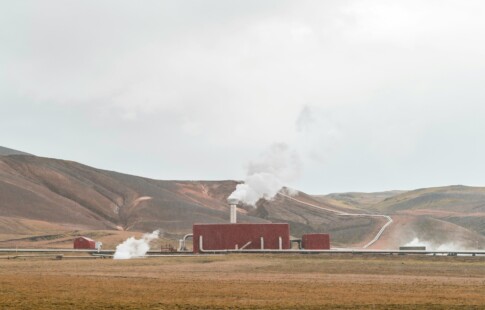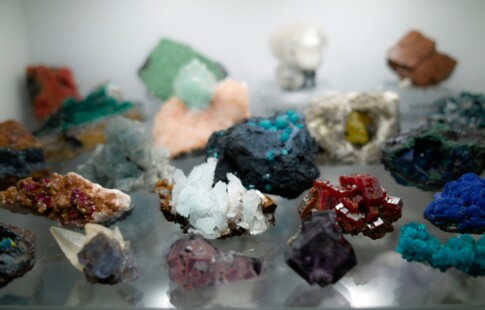
What Is Green Technology and What Are the Advantages?
We are reader-supported. When you buy through links on our site, we may earn affiliate commission.
Environmental degradation and climate change are raising concerns across society. To challenge these issues, innovators are actively developing new forms of green technology. Scientists craft these innovations to protect the environment, limit non-renewable energy use, and heal environmental damage.
Green technology is showing up worldwide, from efficiency features in our cars to solar energy powering local schools, homes, and businesses. This technology operates to limit local waste and natural resource depletion. Moreover, the constantly-falling costs of green devices and technologies allow the average household to access and utilize them.
There are lots of different forms of environmental technology on the market today. Green architectural features, electric transportation, and green home appliances are all active and developing fields within green technology.
Gaining a broad understanding of these various inventions can allow you to implement green devices into your life mindfully. So let’s answer the question: What is green technology?
Green Architecture
Urban areas consistently face challenges of sustainability and environmental protection. Skyscrapers and urban sprawl invade creatures’ habitats, and excessive concrete regions limit the growth and pollination of vegetation. Innovators approached these issues with green solutions to construct more efficient buildings.
Earth shelters are an environmental invention that designs buildings with minimal ecosystem disruption. These buildings are built partially underground or into naturally occurring land formations. This design allows plants and animals to utilize part of the building as their habitat.
Roof gardens are another aspect of green architecture that provides more green space in cities. By bringing vegetation to rooftops, you can develop bird and plant sanctuaries to conserve endangered species.
This technology also allows carbon dioxide to be converted into oxygen by plants. Carbon dioxide reduction can help shrink a city’s carbon footprint and heal climate change.
Green architecture also designs building materials from recycled supplies. The use of recycled materials lowers the need for the over-extraction of scarce resources. One can also utilize locally obtained wood and materials to produce an even greener building.
Electric Transportation
A form of green technology that we are all familiar with is electric transportation. When electric cars hit the market, the media did not let us miss it – and rightfully so. This environmentally conscious form of transportation gave the modern era hope for a cleaner planet.
Fossil fuel-based transportation contributes nearly 30% of global carbon dioxide emissions. Electric forms of travel provide a way to reduce the release of greenhouse gasses. Sustainable car technology is continuing to develop new functions to aid in its efficiency.
The kinetic energy recovery system is a new car feature that creates energy within. When you hit the brakes, your car produces friction that can transfer into power. Scientists have found a way to convert this friction into fuel for your vehicle.
Innovators are using electric car technology to develop electric buses and airplanes. By eliminating their use of fossil fuels, we could improve our breathable air quality and slow climate change.
Normalizing electric public transportation would limit the number of vehicles being built and used. This would further and substantially reduce carbon dioxide emissions.
Green Home Appliances
The average American home uses 32 kilowatt-hours of power a day. Scientists evaluated these issues and developed technological solutions, resulting in an explosion of smart and green-focused devices for homes and businesses.
Smart lights are a new green technology utilized by property owners around the globe. These light bulbs connect to your smartphone or tablet so you can control them from anywhere. Some people like to manipulate their lights when they go on vacation as a safety measure, for example.
This technology also uses light sensing and gesture recognition to adjust itself depending on natural lighting and the people present. When it detects high amounts of natural light or sees no one is home, the light automatically turns off. This reduces the amount of energy each household utilizes, limiting carbon emissions.
The heating and cooling of homes accounts for 40% of their total energy consumption. Scientists and technology companies developed smart thermostats to lower energy use and create an efficient home and industrial temperature control system. These devices also connect to smartphones and tablets for even finer control at a moment’s notice.
How You Can Utilize Green Technology
The normalization and growth of green technology have caused prices to drop, making environmental conservation accessible and affordable. Bringing energy-efficient devices into your home can help you reduce your carbon footprint. Controlling your electricity usage and implementing green architecture can help you build a greener home.
Investing in a green form of transportation can also help you lower your negative impact on the environment. There are many affordable electric and hybrid cars on the market that you can utilize to reduce your fossil fuel emissions. When you incorporate green technology into your daily life, you can lower your contribution to environmental degradation and conserve natural resources.
Share on
Like what you read? Join other Environment.co readers!
Get the latest updates on our planet by subscribing to the Environment.co newsletter!
About the author

Jane Marsh
Starting from an early age, Jane Marsh loved all animals and became a budding environmentalist. Now, Jane works as the Editor-in-Chief of Environment.co where she covers topics related to climate policy, renewable energy, the food industry, and more.





